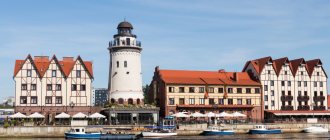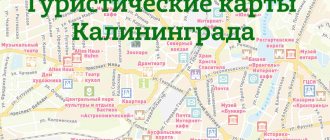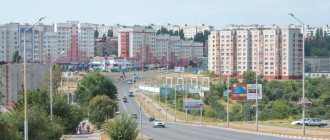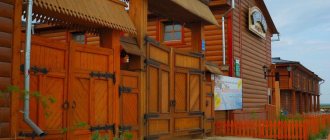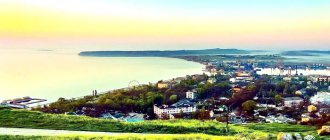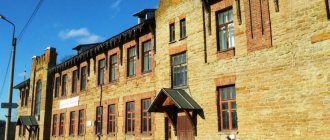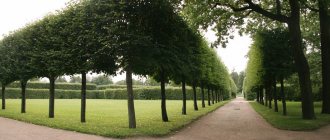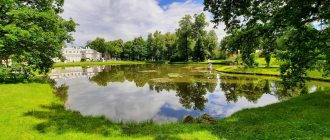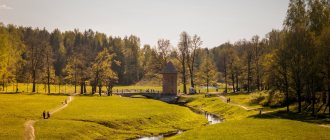The Kaliningrad region has a unique geographical location and is an enclave: it has no borders with other regions of Russia. Its closest neighbors are Lithuania and Poland, and it is washed by the Baltic Sea.
The sights of Kaliningrad have attracted the attention of tourists for many years. The city, located in the north-west of Russia, is the administrative center of the region of the same name.
A few facts about Kaliningrad
- The founding date of the city of Königsberg is 1255.
- The population of the city at the beginning of 2022 is approximately 467 thousand people.
- The city is located on the Pregolya River, not far from its mouth. Pregolya flows into the Kaliningrad Bay of the Baltic Sea.
- Kaliningrad is the westernmost point of Russia. The distance to the extreme eastern point of the country, Ratmanov Island in the Bering Strait, is 6597.30 km.
- From Kaliningrad to Moscow - 1200 km, to St. Petersburg - 950 km.
- The most famous residents of the city are the philosopher and scientist Immanuel Kant (died in Konigsberg) and the storyteller Ernst Theodor Wilhelm Hoffmann (born in Konigsberg).
- The 2022 FIFA World Cup was held in Kaliningrad.
Theater in the Church in memory of Queen Louise
The wife of the Prussian King William III, the beautiful and clever Louise, was adored by the whole country. This brave woman inspired the king to fight Bonaparte. Wilhelm lost, and he and Louise were exiled to Konigsberg. Here, the brave and active Louise left only good memories of herself. When the “Prussian Madonna” died, the authorities of Königsberg erected a church in memory of her. It was placed in the Queen’s favorite park, “Luizenval” (now the Central Park of Culture and Culture).
The Soviet authorities wanted to demolish the church. However, the architect Yuri Vaganov proposed to reconstruct the building and give it to the puppet theater.
How to get to Kaliningrad
- By plane is the fastest and most convenient way. Documents: Russian passport. Travel time: 2 hours. Arrival: Khrabrovo Airport (20 km from the city center).
- By train you will need to cross Belarus and Lithuania. There are no problems with Belarus, but to cross Lithuania you will need to obtain a simplified railway travel document (STR). A ticket to Kaliningrad can be bought online on the Russian Railways website or at the ticket office no later than 28 hours of train departure. The passenger’s personal data is transferred to the Lithuanian Embassy, which within 26 hours decides to give consent to transit through Lithuania or not. In case of refusal, the ticket price will be fully refunded. If you have a Schengen visa, you do not need a UPD. The passenger is notified of the embassy's decision in his personal account on the Russian Railways website or at the ticket office.
South Station
Documents: international passport, UTD Railway/Schengen visa. Travel time: 20.5 hours. Arrival: South Station, Kaliningrad. The Northern Station in Kaliningrad is used for commuter services.
by bus or car only with a valid Schengen visa.
History of Kaliningrad
This city has a rich and tragic history. For a long time it was the administrative center of Prussia. Its foundation dates back to 1255, when the knights of the Teutonic Order founded the Königsberg fortress (translated from German as King’s Mountain) on a hill. It was the fortress that gave its name to the city located near its walls and became its core.
Subsequently, the fortress gradually turned into the Royal or Königsberg Castle. It was here that the coronation of all Prussian kings took place, including Frederick the Great and William I, the first emperor of Germany.
The city first passed to Russia after the victory of Russian soldiers in the Seven Years' War in 1758. However, three years later, the lands were returned to the Kingdom of Prussia by Peter III, who ascended the throne.
And only after the Great Patriotic War, when part of German territory was given to the USSR, Koenigsberg again became Russian - on October 17, 1945. In 1946, its new name appeared - Kaliningrad.
Location on the map, description
Kaliningrad is the westernmost regional center in the Russian Federation. The historical name of the city is Koenigsberg. He bore this name until July 1946. The city is located at the confluence of the Pregolya River and the waters of the Kaliningrad Bay.
During military operations during the Great Patriotic War, this part of the territory of East Prussia was conquered by Soviet troops. It was in April 1945 that the Red Flag was raised there. After the signing of the peace treaty, this territory was first temporarily transferred to the jurisdiction of the USSR.
Later negotiations, during which the borders of the states were clarified, led to the final transfer of Königsberg and surrounding lands into the hands of the Soviet Union.
After the end of the war, the deportation of the local population began, which ended by 1949. Unfortunately, the Soviet government did not try to preserve the heritage of German culture, so now some monuments are irretrievably lost.
Sights of Kaliningrad
Tourists who come to admire the amazingly beautiful city never have the question: “What to see in Kaliningrad?” You won’t be able to see all the sights of Kaliningrad in one day. There are a huge number of interesting places here: the city has many museums, parks and gardens, bridges, monuments, architectural structures created by German architects.
The sights of Kaliningrad are varied, here they can be chosen for every person. Many tourists coming to Kaliningrad visit the Curonian Spit - a unique, beautiful natural site.
Church of the Holy Family
An amazingly beautiful building in the neo-Gothic style, which seems to rush upward. Previously there was a Catholic Church here, now the church is occupied by the concert hall of the Kaliningrad Philharmonic.
This landmark of Kaliningrad received its name according to the plans of the architect F. Heitman. He assumed that the church would become a family home, where the spirit of Jesus Christ and his earthly parents would reign.
Interesting fact! Memorial services were never held in the church, only wedding and baptism ceremonies.
Konigsberg Cathedral
Cathedral
Address: st. I. Kanta, house 1. Website: sobor-kaliningrad.ru
The symbol of the city of Kaliningrad and one of its main attractions is the Cathedral, located on Kant Island. The cathedral was first mentioned in 1333, made in the brick Gothic style, located on the island of Immanuel Kant (formerly Kneiphof).
During the Second World War, the cathedral was burned out and stood in ruins for a long time. It is believed that it was not completely demolished by the Soviet authorities only because the philosopher Kant was buried on the territory of the cathedral. Only in the 90s of the last century did the restoration of the cathedral begin.
Immanuel Kant's grave
Nowadays the Kant Museum is located here and organ concerts are held. The cost of a ticket to the museum is 250 rubles, for schoolchildren and students - 100 rubles.
Monument to Duke Albrecht
Duke Albrecht (1490-1568) is considered the first Duke of Prussia and the last Grand Master of the Teutonic Order. The modern monument is a copy of the Reusch monument, which stood at the royal castle and was lost after World War II.
A new monument to the Duke was erected in 2005 near the Cathedral - the place where the Duke is buried.
Sculpture Park
Sculpture “Creation. World" A.N. Chernitsky
The sculpture park is located on Kant Island, next to the Cathedral. This is an open-air sculpture exhibition. The park exhibits about three dozen sculptures by Soviet authors, which are scattered throughout the park. Created in 1984, territory - 12 hectares.
The park was created to somehow improve the area; for this purpose, rare and unusual plants were planted here.
If you walk across the pedestrian Honey Bridge from Kneiphof Island you will get to Oktyabrsky Island, where you can see the Fishing Village - another symbol of the city, but a very young one, created in 2006-2010.
Where to go with a child
If you come to Kaliningrad in winter with children, then you can have fun not only at the skating rinks. For example, we recommend that you check out your local zoo
. Although the word “look” is not entirely appropriate here, because it is better to plan a trip to the zoo for the whole day. You will also enjoy watching the animals in comfortable spacious enclosures and will also enjoy walking along the numerous bridges and staircases.
Kaliningrad Zoo during the New Year holidays
The original attraction operates in the Yunost park
.
It represents a house in which everything is upside down. The attraction is called “ House Upside Down
”. You will literally walk on the ceiling and admire the furniture that seems to be underneath you. At some point, you may even get a little lost in space, because the surface on which you are moving is also on a slight slope. You and the children will definitely find it interesting and you will certainly take a lot of cool and original pictures.
Bringing Down the House
So you can and should go to Kaliningrad in winter. History, architecture, museums, entertainment. All this does not disappear anywhere with the end of summer. Moreover, many objects begin to look completely different. Be sure to come here and see for yourself.
Fishing village
Rybnaya or Fisherman's Village in Kaliningrad is a new quarter built on the Pregolya embankment in the style of a German medieval city. It is located on Oktyabrskaya Street from Honey Bridge to Vysoky Bridge. It is believed that the Fish Market was previously located on this site, which gave the name to the modern quarter.
There are hotels, restaurants, cafes, souvenir shops, business and administrative centers, and sports and entertainment centers. The Lighthouse Tower houses the Madame Boucher restaurant, a glass museum and an observation deck overlooking the city. Pleasure ships and boats depart from the pier.
Konigsberg Castle
Royal Castle
The history of the city of Königsberg began with the Königsberg fortress-castle. We can say that it ended with her. The Royal Castle was heavily damaged by Anglo-American air raids during the Second World War. However, its condition after the war was better than the Cathedral.
Photo reconstruction of Königsberg Castle
It was here that the Amber Room was kept (1942-1945), taken by the Germans from the Catherine Palace in Pushkino (Tsarskoe Selo). After Soviet troops entered Königsberg in April 1945, the Amber Room disappeared without a trace.
Ruins of the Royal Castle
After the war, the city's population was busy treasure hunting for a long time in the ruins of the Royal Castle. In 1967, the remains of the castle were blown up. On the site of the south-eastern part of the castle, the House of Soviets was erected and never completed.
Archaeological excavations were carried out on the territory of the castle (1993-2007), some of them were financed by the German magazine Der Spiegel, funds were allocated to search for the Amber Room. Excavations were stopped without conserving the architectural remains, which are now being destroyed due to weather conditions.
Currently, the Kaliningrad authorities do not know what to do with the Royal Castle: to restore it or not, and what to build in its place.
Excursions around Kaliningrad: routes, prices
If you don’t want to walk on your own or want to learn something new about the city, then it’s worth taking an organized excursion. Travel agencies offer several options.
For example:
- visit to the Kursk Spit, cost from 1,500 to 5,000 rubles;
- sightseeing tour of the city, from 500 to 3,500 rubles;
- trip around the city at night, 700 rubles;
- castles of East Prussia, from 1,500 rubles;
- search for the amber room, from 1,000 rubles.
Kaliningrad (amateur and professional photos show the main attractions) is worth visiting at least once in your life. Descriptions of places and the historical significance of the area can be found in the works of modern authors.
Article design: Vladimir the Great
House of Soviets
The House of Soviets is a symbol of Soviet Kaliningrad. The locals call it “robot”, it really looks like it. The grandiose 21-story building was supposed to house all the government structures of the city. Construction began in 1970, but has not yet been completed.
Tourists used the House of Soviets to climb onto the roof and admire the city from above. The event is not safe, there are no elevators in the building, you had to walk up. The territory of the building is fenced and guarded, but the guard allowed those who wanted to enter for a modest fee.
Now for the 2022 FIFA World Cup the situation has changed. The area around the House of Soviets has been landscaped, a new fence has been installed, and tourists are now prohibited from entering.
Gate of Kaliningrad
Brandenburg Gate
Eight city gates of Kaliningrad, made in the neo-Gothic style, have been preserved in the city. All of them are united not only by a single style, but also by a medieval atmosphere.
- The Brandenburg Gate is the most Gothic gate in Kaliningrad and the only gate that performs its intended function: vehicles pass through the gate.
- Sackheimskie - the art platform “Gate” is located here, exhibitions are held.
- Royal Gate - the historical and cultural museum, which is a branch of the Museum of the World Ocean, operates here and talks about the origins and development of the city.
- The Rossgarten Gate forms a single complex with the Don Tower. The Sun Stone restaurant is located here.
- Ausfalskie is the most inconspicuous gate of Kaliningrad; the St. George Chapel is located on its territory.
- Railway.
- Friedland Gate - now the Friedland Gate Museum is open here.
- The Friedrichsburg Gate is all that remains of the Friedrichsburg fortress. The only gate that did not lead to the city of Konigsberg, but to the fortress. Here Peter I learned artillery science in 1697 under the name of the sergeant Peter Mikhailov. Now the Friedrichsburg Gate houses the historical and cultural center “Ship Resurrection” from the Museum of the World Ocean.
Friedrichsburg Gate
Tips, reviews, stories from tourists
If you are going to Kaliningrad in winter, you should definitely study the city guide. In addition to attractions, it describes in detail the city's transport system, the best places for shopping and other important background information.
Kaliningrad amber Photo: © Inna Savinskaya
The experience of winter trips to Kaliningrad and photo illustrations of other tourists will be useful.
Winter stories about Kaliningrad
- December trip Kaliningrad - Svetlogorsk - Chernyakhovsk - Gusev from Roman
- Notes by Vladimir Shalaev, conveying the atmosphere of the Baltic city - A city with two names
- A story from Elena Borzykh - Where Koenigsberg ends and Kaliningrad begins
- Konstantin's detailed story about the Museum of the World Ocean
- Essay on Catherine - With an amber spoon in her mouth
- Elena's photo album - Galloping through Europe in Kaliningrad!
All tourist reviews about Kaliningrad
Szczecin in winter Photo: © Vesnuschka2016
Forts of Koenigsberg
Fort No. 1 Stein
The forts of Kaliningrad are a ring of defensive structures of the city, the so-called “night feather bed of Konigsberg”. The ring consisted of 12 large and 3 small forts located at a distance of approximately 5 km from the city and protecting the approaches to it.
The forts of Kaliningrad were built at the end of the 19th century and were useful to the Germans only during World War II in 1945, when the Red Army approached Konigsberg. Because of the fort system, Soviet soldiers had a difficult time storming the city. A medal was given for the capture of Koenigsberg; it is noteworthy that this is the only medal that was not given for the capture of the capital. More than two hundred people participating in the assault on the city became Heroes of the Soviet Union.
Fort No. 5 King Frederick William III
Now some of the forts are abandoned, some have been turned into museums. Fort No. 5 King Friedrich Wilhelm III was the luckiest of all - in 1973 it became a branch of the Kaliningrad Regional History and Art Museum. Anyone can come and see the fort.
Another most popular and accessible fort is Fort No. 11 Denhoff.
Fort No. 11 Denhoff
Curonian Spit
The Curonian Spit is a unique attraction of Kaliningrad, as it is the longest sand bar in the world. Located between the Baltic Sea and the Curonian Lagoon, it is included in the UNESCO World Heritage List.
The length of the Curonian Spit is 98 km, the width ranges from 0.4 to 3.8 km along its entire length.
The Curonian Spit is a natural area with a unique but fragile ecosystem. Thanks to a combination of landscapes - from sand dunes to raised bogs, 296 species of terrestrial vertebrates and 102 species of nesting birds live here, and about 600 species of plants grow.
What to see on the Curonian Spit:
- white sand dunes up to 1 km wide and up to 67 m high;
- a dancing forest where pines with intricately curved trunks grow;
- freshwater Lake Chaika, where in the 19th century residents of local villages collected gull eggs;
- lighthouses "Rybachy" and "Lesnoy";
- Müller's height and Ef's height are the points on the highest dunes.
Numerous eco-routes , which will introduce guests better to the local landscapes.
Churches and temples
Kircha Juditten
Address: Shady Alley, building 39 b
Kirch Juditten is considered the oldest building preserved in Kaliningrad. The estimated year of construction is 1288. It is an object of historical and cultural heritage of federal significance.
The church was transferred to the Russian Orthodox Church in the 80s of the last century. Restoration work was carried out here for a long time; the first service was held in 1988. The church was renamed St. Nicholas Cathedral. In 1996, a women's diocesan monastery was founded here - the first in the Kaliningrad region.
Queen Louise's Church
Address: Pobedy Avenue, building 1 (in the territory of Central Park).
The church in memory of the most popular woman in Prussia, Queen Louise, was built in 1899-1901. Architect - Friedrich Heitmann.
During the Second World War, Queen Louise's Church was destroyed, its ruins stood idle for a long time, and plans were made to demolish it. But thanks to the project of architect Yuri Vaganov, the church was restored and converted into a Puppet Theater, which opened here in 1976 and is still in operation.
Church of the Cross
Address: Oktyabrsky Island, General Pavlov Street, building 2.
The Church of the Cross was built in 1933. It was not badly damaged during World War II. During Soviet times it was used as a car repair shop and factory. By the 80s of the last century it was abandoned, later transferred to the Russian Orthodox Church.
The Church of the Cross became the Orthodox Cathedral of the Exaltation of the Cross. Before the appearance of the Cathedral of Christ the Savior in the city, it was a cathedral. There is a unique amber iconostasis here.
Church of the Holy Family
The Church of the Holy Family was built in 1907. This is another work of the famous German architect Friedrich Heitmann, considered his best work.
In 1945, the church was severely destroyed. In 1980, the Kaliningrad Regional Philharmonic was opened there after a lengthy reconstruction. Organ music concerts are held here.
Cathedral of Christ the Savior
Address: Pobeda Square, building 2a
The Cathedral of Christ the Savior in Kaliningrad is the first Orthodox church built in the city. Before this, all Orthodox churches were occupied by German churches. The temple was built in 2006 and consists of an Upper and Lower temple. Also included in the cathedral complex is the Temple of Peter and Fevronia, built in the same style and almost the same size in 2012. A distinctive feature of this temple is its double dome.
The Cathedral of Christ the Savior is very large, 70 meters high, and can accommodate 3 thousand people.
The main churches of Kaliningrad - TOP-3
Kaliningrad boasts a whole scattering of religious buildings erected here over a long history. Some of them were seriously damaged by bombing during the war, and after restoration they began to be used for a different purpose. In this section you will find a description of the most interesting and revered operating temples.
Holy Cross Cathedral
- Opening hours: daily, 24 hours a day.
- Telephone.
- Address: st. Generala Pavlova, 2. Transport stop “Fish Village”.
This temple was converted into an Orthodox cathedral from a Lutheran church built by Arthur Kickton between 1930 and 1933. The dominant exterior of the majestic building, whose architecture harmoniously combines lush neoclassicism, strict Gothic and practical Art Nouveau, is a huge niche between the two towers of the western facade. It is covered with a magnificent panel depicting a cross. The interior of the temple is no less magnificent, the true pearl of which is considered to be the iconostasis made of amber.
Cathedral of Christ the Savior
- Opening hours: daily, from 9:00 to 21:00.
- Telephone.
- Website: https://www.soborkld.ru
- Address: Victory Square, 2. Transport stop “Victory Square”.
The foundation stone for the main Orthodox church of the city was installed during the celebration of the 1000th anniversary of Christianity in Rus' by the then Metropolitan Kirill of Kaliningrad and Smolensk. Construction work began in 2004, and two years later the cathedral was consecrated. The architectural features of the temple are the protruding entrance portals and the magnificent glazed arches of the facade, covering an area of about 1000 m². The Byzantine domes of the cathedral rise 69 m above the ground. The interior amazes with the abundance of marble and polished granite in the decoration. The largest bell installed on the belfry weighs about 14 tons.
Church of St. Andrew the First-Called
- Opening hours: daily, from 8:00 to 20:00.
- Telephone.
- Website: https://www.andreevsky-kd.cerkov.ru
- Address: st. Komsomolskaya, 64. Transport stop “Chekistov Street”.
Another temple, which appeared in the city quite recently, was built in honor of St. Andrew the First-Called. The church, consecrated in 2007, is very interesting from an architectural point of view. Its exterior is designed in the best traditions of church architecture of the Russian North. Temples with similar architecture, characteristic of the authentic style widespread in the 17th-18th centuries, are quite rare in the western cities of the country. The white-stone, single-domed church with a low drum and a gilded dome looks surprisingly elegant.
Monuments
Monuments are one of the main attractions of the city of Kaliningrad. Outlandish and unusual structures are of particular interest.
Monument to Baron Münchhausen
Monument to Baron Munchausen
Address: Central Park of Culture and Leisure
An amazing monument to the beloved cartoon character Baron Munchausen, who became famous throughout the world for his unforgettable adventures. And here, as in one of his stories, the hero sits on a cannonball.
Wrestling bison
Address: Mira Avenue, building 2.
The bronze sculpture “Fighting Bisons,” located in front of the courthouse, symbolizes the eternal battle between good and evil. The author is the German animal sculptor August Gaul. The sculpture was made in 1911 and installed in 1912.
Monuments to historical figures
Monuments erected not so long ago clearly demonstrate the beginning of a new era in the life of the city. These are monuments to A.S. Pushkin, M.I. Kutuzov, and Immanuel Kant. The latter was made in 1857 by the Berlin sculptor H. Rauch, but the original was lost during the Second World War, and in its place a copy appeared, made in 1992 by the German sculptor H. Haack.
Historic quarters of Amalienau, Ratshof and Maraunenhof
In 1906, the fortress ramparts, which had long lost their significance, were transferred from the military department to the city, and Koenigsberg, previously crowded within the defensive ring, began to grow beyond the ramparts.
At that time, the idea of creating a garden city was in the air. Here and there, incarnations of this concept arose.
Koenigsberg also did not stand aside. As a result, three original quarters emerged in the city: Amalienau, Ratshof and Maraunenhof. They were built with small comfortable houses, and gardens were laid out around the houses.
Rasthof was created as a quarter for workers of the carriage factory; a more respectable public settled in Amalienau and Maraunenhof.
Since these neighborhoods were located on the outskirts of the city, they were practically undamaged during the war. And now it’s very interesting to walk through the green neighborhoods, among the original villas built in Art Nouveau.
The Altes Haus museum is located in one of the houses. Address: st. Krasnaya, 11, apt. 1. Open from Monday to Saturday, tours at 11, 13, 15.
Amalienau is located in the western part of Kaliningrad, behind the Central Park (Kutuzov Street, Pobeda Avenue).
Rasthof follows Amalienau, it is even more trap and is located between Engels and Vozdushnaya streets.
Look for Maraunenhof in the north, behind Yunost Park, where the Upper Pond ends. The Maraunenhof villas lined Thälmann Street (former Augusta Victoria Alley).
Museums
Speaking about the sights of Kaliningrad, one cannot remain silent about its many interesting museums. The most interesting museums in Kaliningrad: the Museum of the World Ocean, the Amber Museum, the Art Gallery and the Historical and Art Museum.
Museum of the World Ocean
The main building of the Museum of the World Ocean
Address: Peter the Great embankment, building 1. Website: https://world-ocean.ru
The museum was created on April 12, 1990. The Museum of the World Ocean will allow everyone to feel like a true explorer of the deep sea or act as a real sea wolf. Among the exhibits on display in the museum, it is impossible to pass by the famous motor ship "Mars". It is currently the research vessel Vityaz.
The unique and miraculously surviving fishing trawler "SRT-129", as well as the only surviving Soviet ship of the "Star Flotilla", the space communications vessel - "Cosmonaut Viktor Patsayev".
In addition to these exhibits, the museum has created a line of exhibitions on marine themes. These are the most interesting collections of shells of marine mollusks, samples of marine fauna, corals, preserved letters from travelers and sailors, aquariums with exotic fish, and the skeleton of a huge sperm whale.
Amber Museum
Amber Museum
Address: pl. Marshal Vasilevsky, house 1. Website: www.ambermuseum.ru
The Amber Museum is another symbol and landmark of the city of Kaliningrad. This is the only amber museum in Russia. It is located in the ancient Der-don tower, which was once a strong defensive point. Opened in 1979.
Here you can find a wide range of “sun stones” of different parameters, shades and geometric shapes. This museum also houses the world's largest amber mosaic “Rus”. The exhibit weighs over 70 kg, and more than 3,000 fragments were required to create it.
Art Gallery
Address: Moskovsky Ave., 60-62. Website: https://kaliningradartmuseum.ru
The city's art gallery, specializing in alternative and contemporary art, also attracts with its unusualness. The entire exhibition consists of five main parts:
- "Kaliningrad artists".
- "Graphic arts".
- "Folk Crafts".
- "Art glass and ceramics."
- "Art and Culture of East Prussia".
Historical and Art Museum
Address: st. Clinical, 21. Website: https://westrussia.org. Opening hours : from 10.00 to 18.00, closed on Mondays.
The History and Art Museum is a must-visit attraction in Kaliningrad. The museum's holdings contain invaluable materials and objects that help to better understand and trace the complex but fascinating history of the city.
Here you can see the remains of the collection of the Prussian Museum, which before the outbreak of World War II was considered the largest archaeological museum in Europe. The entire exhibition is divided into five halls: the Hall of Nature, Archaeology, Regional History, War and “Horizons of Memory” - an exhibition dedicated to modern history from 1945 to the present.
The building itself deserves special attention. It was originally built as the city's concert hall, the Stadthalle.
In other parts of the city, the museum has several additional branches: the Kant House, the Bunker Museum, Fort No. 5 and the Christionas Donelaitis Museum.
Svetlogorsk
My favorite resort in the Kaliningrad region. If your vacation lasts more than a week, spend the rest of it here. There is a lot to see in Svetlogorsk. There is also a pleasant resort atmosphere, clean air, sea and lake with swans. Beauty!
Watch my video about Svetlogorsk, and I’ll tell you a little more about hotels, food and routes.
Where to stay and eat
In Svetlogorsk you can live in resort hotels or sanatoriums. We came here for a month, so we rented an apartment through AirBnb (if you haven’t used this service before, get a discount of up to 4,000 rubles on your first apartment booking - go here).
The most popular and in all respects pleasant hotel in Svetlogorsk is Grand Palace 5*. It is located on the old boardwalk. Friends recommended Madame L 5* and Hartman 4*. Of the simpler options, tourists really like the 3* Station Wagon and the Sosny guest house. I haven’t been to them myself, but I’ve heard a lot of good things.
You can eat inexpensively and satisfyingly in Svetlogorsk at the “Good Dining Room” or in a cafe with a.
Other restaurants I recommend:
- Local – Baltic cuisine: expensive, but worth it.
- Papa Beppe is a historical pizzeria: delicious, large portions.
- Vika – great prices and choice of dishes, cozy (even the flowers on the terrace smell like honey).
- Fisherman's House - come here for fish and a beautiful view.
- Nymph is a pleasant cafe with a view on the promenade of Svetlogorsk (I heartily recommend the Lithuanian borscht, smoked eel and homemade Napoleon).
Day 6
Go down to the sea and take a walk along the promenade of Svetlogorsk. Take a ride on the cable car, drink a glass of lemonade from a Soviet machine (look for it near the lower station of the funicular). Be sure to take a walk along the beach. Walk the entire promenade: old and new. Take a photo of the sundial. If you have any strength left, walk to the Yantar Hall and the park behind it. There are great lookouts there!
Day 7
See the main attractions of Svetlogorsk: the water tower, Central Square, pump room. And then take a walk along the neat streets lined with 19th-century houses. Walk to the organ hall and swing on the swings in Larch Park.
In the afternoon, visit Hoffmann Lane. The famous storyteller and author of “The Nutcracker” was born in Konigsberg, and is very popular here. Look at the figures of heroes from fairy tales. Admire the model of medieval Königsberg. Take a circle around the courtyard of the House of Storyteller hotel. And if you have any strength left, go through a thematic quest (it’s interesting, I did it).
In the evening or on the day of departure, go to Lake Tikhoye. This landmark of Svetlogorsk is a must see. Take a long loop to admire the swans, ducks, centuries-old linden trees and forest paths. You'll like it!
I wrote in detail about all the sights of Svetlogorsk here. A map with a ready-made route for 1 day is attached.
I hope you like this trip plan to the Kaliningrad region. Write comments if you have any additions or questions. Follow me on Instagram. All posts and stories for October-November 2022 are dedicated to vacations in the Kaliningrad region. Feel free to write in direct message - I try to answer everyone. I wish you a good holiday and sincerely hope that you will love Kaliningrad!
>>> Useful services for travelers <<
